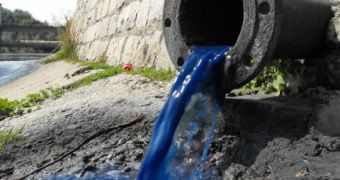A few days ago, Greenpeace drew attention to the fact that, thanks to its supply chain, Levi's had to be held accountable for polluting several Mexican freshwater sources.
Another report concerning human society's pressing need to “Detox Fashion” focuses on the ecological impact major brands such as Gap, Calvin Klein and Levi's have in China.
According to Greenpeace, China's Zhejiang province is presently threatened by the development of two major industrial zones, whose wastewater is simply discharged in the environment on a regular basis.
These two industrial zones currently house factories that are in the business of supplying major clothes manufacturers and marketers with whatever products they need in order to keep things up and running in their stores.
Therefore, it comes only natural that Greenpeace would go after these fashion brands and demand that they green up their supply chains as soon as possible.
“All of the samples in this study contained a diverse rande of chemicals, many of which have known hazardous properties. Many can be related to the manufacture of textiles,” reads the official Grenepeace reports on this matter.
Furthermore, “Their occurrence is consistent with the presence of many textile manufacturing and related facilities in the two industrial zones.” Environmental Leader explains that some of the pollutants found by the researchers working with Greenpeace in these water sources are known to be carcinogenic to animals and possibility even humans.
Others are not this toxic, yet they tend to accumulate in the environment and, on the long run, it is likely that they will cause the people who become exposed to them liver and kidney damage.
The other brands Greenpeace has managed to link to these industrial zones are as follows: Marks & Spencer, H&M, Next, The Limited, Express, Nike, Adidas, Esprit, Calvin Klein, Levi’s, JC Penney, Liz Claiborne, Gap, Target Store, Esprit and Adidas.
However, since there is no way to tell which pollutants come from which factories, Greenpeace can only hope that these brands will willingly agree to further investigate the issue.

 14 DAY TRIAL //
14 DAY TRIAL //